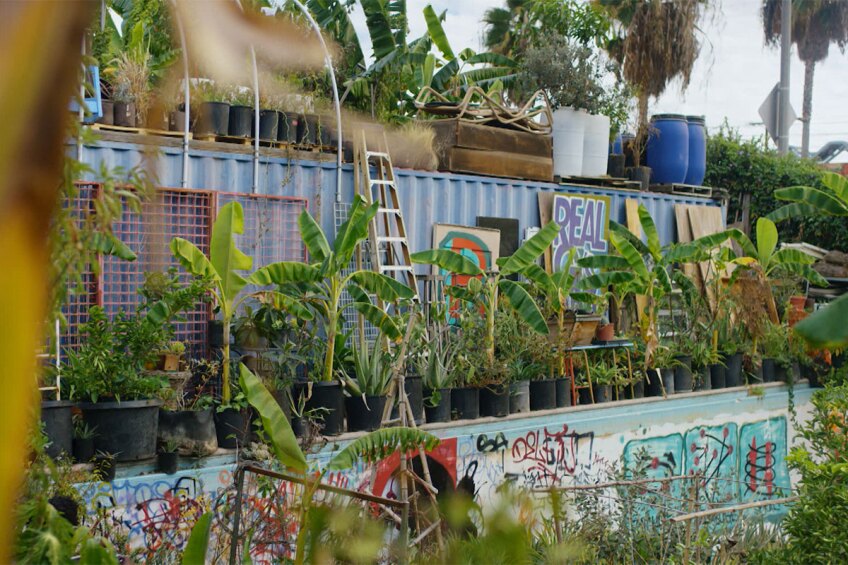Ron Finley: Gardening the Gangsta Way

"Get gangsta with your shovel, okay?" Ron Finley told the TED Conference crowd back in 2013, "and let that be your weapon of choice." The crowd roared with applause, a video of the talk went viral and Finley, a fashion designer-turned-community garden activist from South Central, became internationally known as the "Gangsta Gardener."
At that point, Finley was already something of a local celebrity. Frustrated with the lack options for buying fresh produce in his neighborhood — and the community health problems that "food deserts" can trigger — Finley grew a garden in the parkway in front of his home. The harvest was bountiful, but city powers weren't so keen on his use of the tiny patch of green space that's technically owned by them. Finley fought to keep the garden and his cause was picked up by Los Angeles Times columnist Steve Lopez. This, however, would turn out to be just one of the battles in Finley's quest to create "food forests."
More About Broken Bread




Previously, Finley was a renter. The space was also the headquarters for The Ron Finley Project, an effort to create a “self-sufficient ecosystem of gardening, education, cooking, business learning and management” in his South Los Angeles community.
In 2016, Finley’s original landlord defaulted on his mortgage payments and sold to another party, who then started an eviction process against Finley. In an effort to stay in his residence, Finley started a crowdfunding campaign in January 2017 to purchase the property from its new owners. His campaign was already in full swing when he approached the executives of natural food companies for help. According to the New York Times, Nell Newman of Newman's Own pitched in $21,000, and other companies, like Annie's, Applegate Farms and Califia Farms, offered monetary support as well. By April 2017, Finley raised enough to purchase the land.
Finley has often likened his gardens to graffiti and, like some of the world's top graffiti artists, he was part of the massive 2018 art exhibition “Beyond the Streets.” Like street art, Finley's work is rebellious, public and a feast for the eyes. While both can provide creative nourishment, gardens provide nourishment for the body as well.







